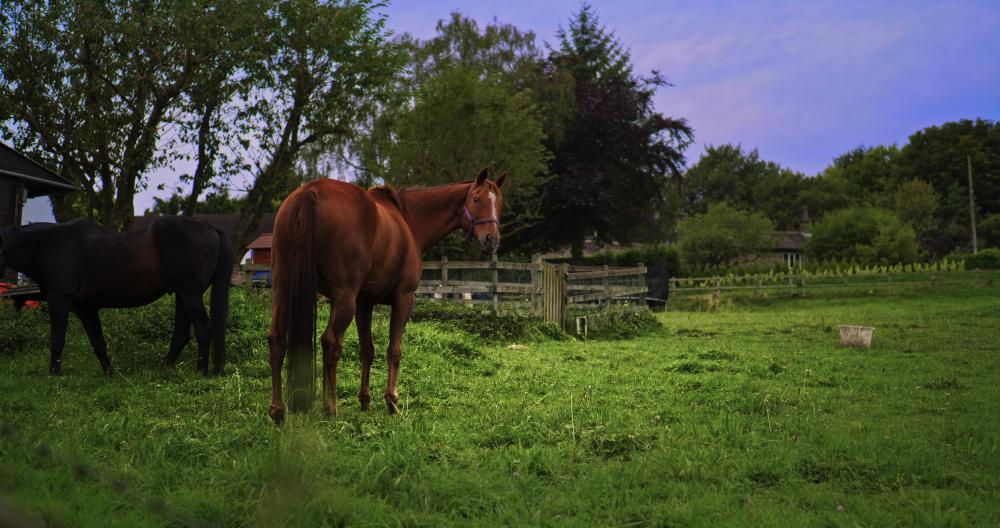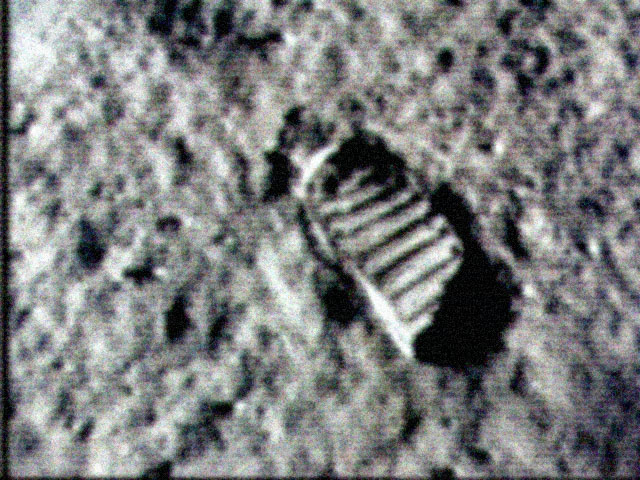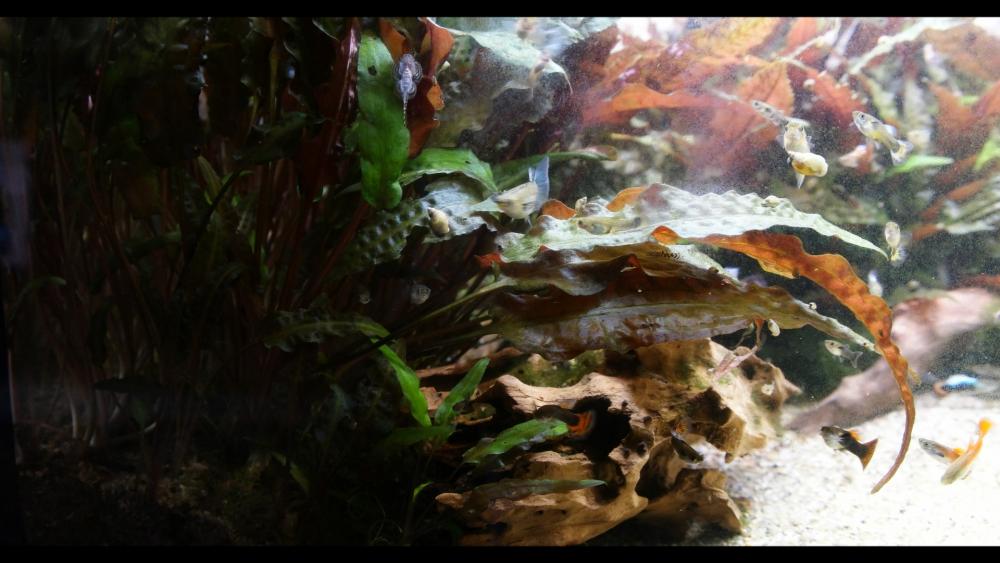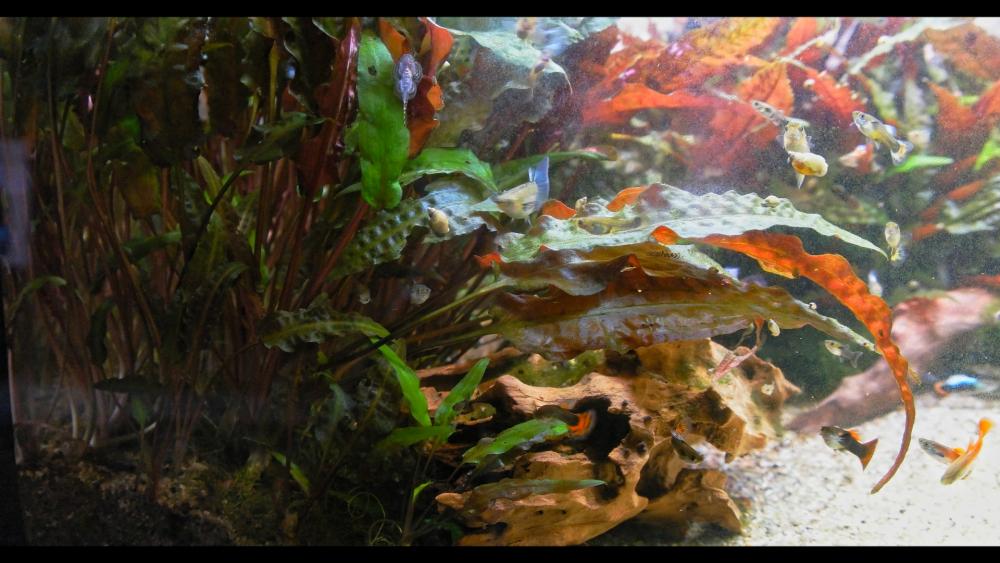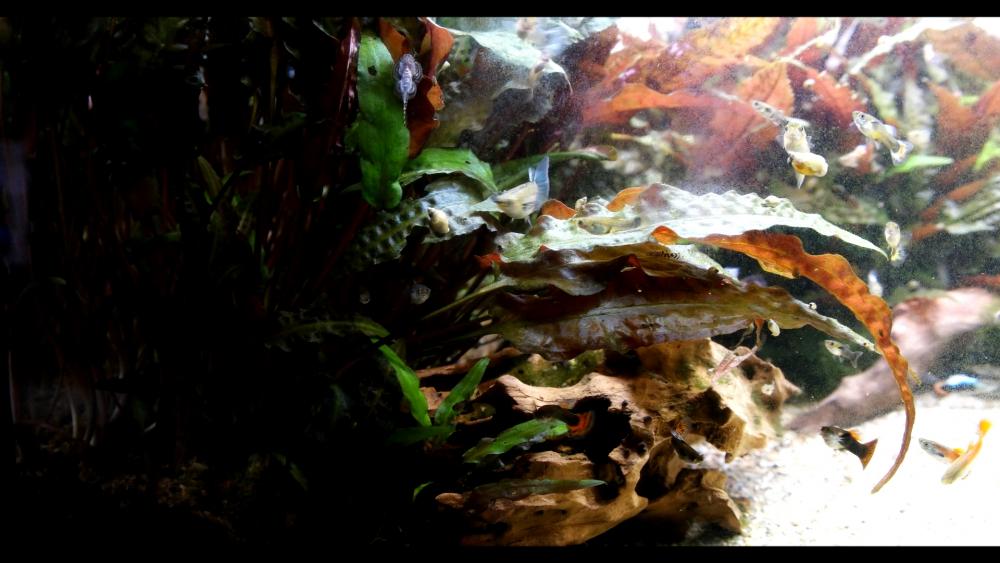
levisdavis
Members-
Posts
50 -
Joined
-
Last visited
levisdavis's Achievements

Member (2/5)
26
Reputation
-
 levisdavis reacted to a post in a topic:
Jinni Tech claims RED Compressed RAW patent filing is invalid
levisdavis reacted to a post in a topic:
Jinni Tech claims RED Compressed RAW patent filing is invalid
-
BM sure did hype BRAW didn't they. Experienced this 3-months ago and wondered why this could ever get passed QC. ( Not my camera. Updated from CDNG to BRAW before the shoot as a means to maximize recording space. ) Went up to Monument Valley for an interview + b-roll for a documentary project. Safe to say that BM lost a camera customer 3-months ago. Respectfully, I had no idea BM could be so unaccountable. They went on record stating there was no difference between CDNG and BRAW. This was backed by beta testers as well; something I appreciated and respected before making the firmware update. * Note that this project setting is native 4K 4096x2160 resolution, full resolution playback, and the media is not optimized. Also, the last image is un-graded.
-
HLG is said to handle up to 16-stops DR. That would make me think that the 12.1 or 12.2 stops is the max for the camera; even with VLOG. Makes me wonder about the colors / tones / highlights roll-off and shadow detail though as it may be a more cinematic look in comparison to the HLG? In that same line of thought, in terms of max DR... Will the Z6/Z7 reach 14 stops DR w/ and HDMI out ATOMOS BRAW combination? ... Thinking the sensor natively handles about 14-stops of latitude in stills... The BRAW output could theoretically be the same. However, it's possible that the full DR is being clipped in the output signal.
-
Panasonic GH5 Review and exclusive first look at Version 2.0 firmware
levisdavis replied to Andrew Reid's topic in Cameras
Seems to hold up quite well. This is a VLOG L sample grade. Admittedly, my first attempt at grading VLOG L resulted in blocked shadows. It became quite apparent when attempting to add noise reduction as noise reduction doesn't look at macro blocking as a reduction parameter. VLOG L aside, and like Andrew mentioned, the Standard Picture Profile is seriously quite a Standard! There's a lot of dynamic range and a wonderful noise floor to go along with. ** Seems like a professional industry standard. ** -
Time to dump Adobe. First impressions of Resolve 14 and EditReady 2.0
levisdavis replied to Andrew Reid's topic in Cameras
10bit GH5 files are rendering quite fast in DR 14 Studio. I'm getting about 40fps 4K to 1080P w/ a couple of adjustment nodes on a Ryzen 1700x w/ a Saphire RX480 8GB OC Nitro. ** Wasn't expecting DR to support the GH5 10bit files already. ** I'm finally seeing just how great the low bit-rate 10-bit codec is. It's quite an impressive capture space, in my opinion. - - - - - - - - - - - - - - - - - The snapping feature is annoying in DR. There is a quick key to turn it on and off as well as a Magnet icon on the center of the tool bar. (You can have the Snap featured turned off, slide an audio/video clip and press the quick-key while dragging the file and it will lock. Then, after the lock, it will default back to none-snapping.) ** FYI: You can remap a lot of the commands in the Keyboard Layout in the Project Settings. Snapping is one of the short-cut keys I use most. ** I too simply can't fine-tune an edit when audio/video skips a minimum of 3 frames. - - - - - - - - - - - - - - - - - DR 14 is already out for Linux. -
Time to dump Adobe. First impressions of Resolve 14 and EditReady 2.0
levisdavis replied to Andrew Reid's topic in Cameras
DR 14 Public Beta 2 has just been released on BM's website. -
Still using Resolve 12.5 here. Installed beta #1 for DaVinci Resolve 14 and it worked for all of about 10 minutes. Experienced a database error and it hasn't work since; including multiple re-installs. Posted the results on BM's Resolve forum. Others are, in fact, having the same issue; in addition to a multitude of other crashing / non-functioning issues. As of right now, this beta #1 DaVinci Resolve 14 is far, far worse than any beta releases from both DR 12 and DR 12.5. That being said, waiting to test next beta DR 14 release, here. Hopefully it's strong enough to work. Previously, the DR 12 and 12.5 beta releases were sound enough to do work with.
-
 jcs reacted to a post in a topic:
Adobe Rant
jcs reacted to a post in a topic:
Adobe Rant
-
I heard at NAB 2017 from a BM rep that Resolve 14 is partially created by an individual who co-created Apple Final Cut Pro 5-6-7. More specifically, one of the most prolific individuals from Final Cut Pro 5-6-7 has moved onto to Blackmagic Design DaVinci Resolve. In my opinion, it's worth your time to study the program. For example, 2 - 3x faster render times in Resolve than w/ Adobe Premiere. Admittedly, there are some issue, if you become an expert, but they all appear to have a resolution, whether a new software iteration or a user group that facilitates productivity. Personally left Adobe just over a year ago, before Resolve 12.5. I actually enjoy editing now; specifically because I feel like I know exactly what my hardware is capable and that "that capability" is almost always delivered.
-
 levisdavis reacted to a post in a topic:
Canon C700 at IBC 2016 but no 1D C Mark II. Have they killed it off?
levisdavis reacted to a post in a topic:
Canon C700 at IBC 2016 but no 1D C Mark II. Have they killed it off?
-
 levisdavis reacted to a post in a topic:
5DIV full spec and full image leak
levisdavis reacted to a post in a topic:
5DIV full spec and full image leak
-
 sandro reacted to a post in a topic:
5DIV full spec and full image leak
sandro reacted to a post in a topic:
5DIV full spec and full image leak
-
 levisdavis reacted to a post in a topic:
5DIV full spec and full image leak
levisdavis reacted to a post in a topic:
5DIV full spec and full image leak
-
 tokhee reacted to a post in a topic:
5DIV full spec and full image leak
tokhee reacted to a post in a topic:
5DIV full spec and full image leak
-
-
No LOG profiles. But, it's still possible to upload custom picture profiles such as "CineStyle." One of my personal favorites, going back a few years, was made by "Crooked Path" called "Hi-Lite Recovery." I visited the website about a month ago, after buying a used Canon 50D. It looks like he took the profile down, unfortunately. Maybe the DR with Cinestyle and/or other custom picture profiles can really make the 4:2:2 Codec shine? Phillip Bloom has said he prefers "Natural" with dialed down sharpness, contrast, and saturation. I've found others on the Internet stating how that appears to create the best image.
-
Sent DNGs into BM for review... It's now going on 3 days for them to review the footage. The FPN, in the shadows, is inconsistent. It ranges in value. For example, there's definitely lines in the image about every 10 pixels. However, some of these lines, about every 100 to 200 pixels has a serious spike in exposure. It's easily seen if anything moves on camera, especially if you'r looking for it. - - - - - - - - It's in the ProRes "Film" mode at native ISOs. It's in the Raw at native ISOs. Shooting in "Video" mode, however, when shooting at ISO 400 and 200 the vertical FPN is virtually eliminated. - - - - - - - - ... The difficulty is in the grade. You can't access/accent this area as it only attenuates the FPN issue. IMO, that makes the camera much more of a "Video" mode camera. I also own a Pocket Cinema Camera and this camera does have a similar signs of FPN, but it's very, very low in the shadows and there aren't any areas that have varying exposure values. It's next to impossible to pick up on it, even when looking for it. Honestly, I may have a faulty Pocket too? Either way, this pocket handles "Film" mode and certainly offers the full dynamic range/grading capabilities. - - - - - - - - - Side note, this may be related to changing FPS? I've never turned the camera off after changing the FPS... Been capturing event coverage in the field with perfect 70 - 80 degree weather. Usually, I'll shoot off an entire battery before powering down and cycling. Anyway, will take note if there are any changes related to FPS and power cycles and respond. Interestingly, the GH4 makes you power down the camera when changing from true 4K 24P into 1080 60P. This may be a feature that BM will have to implement?
-
 levisdavis reacted to a post in a topic:
Blackmagic Micro Cinema Camera
levisdavis reacted to a post in a topic:
Blackmagic Micro Cinema Camera
-
First saw the slow shutter speeds with the GH2... A good example of this is to shoot an interstate with traffic. The car's tail lights and break lights are all blurred in motion. Trees blowing in the wind with a lot of motion blur is another example. You can gather scratch audio too as the audio will play back at normal speeds. It actually looks pretty awesome and it's a super simple method for capturing a "timelapse" looking scene. The slow shutter can also be used to gather extra light, so long as there isn't a lot of motion in the scene. They'd even allow you to go up to a 2-second shutter, if I remember correctly.
-
 Zak Forsman reacted to a post in a topic:
Blackmagic Micro Cinema Camera
Zak Forsman reacted to a post in a topic:
Blackmagic Micro Cinema Camera
-
Might be able to get a composite signal out of the BMMCC while shooting 60P. As of now, HDMI output is the same FPS as what's being shot. There is no option in the menu to change the output settings like most of the major mirrorless / DSLRs on the market. Looking to test the resolution of the composite to see if it's even worth shooting at. While testing, I switched to 60P to see what it would look like and I lost the video signal on the Zacucta EVF Pro. I had no way of resetting the FPS. At that point, I had to connect the BMMCC to a television to rest the FPS back to a recognizable video feed. Shooters need to be aware of this before embarking on an epic journey only to accidentally change frame rates and loose their video feed permanently. I wonder if there is a way to program a Custom Setting and simply hold the power button and another button at the same time in order to reset user prefs? If not, what are BM waiting for?
-
 levisdavis reacted to a post in a topic:
Sony A6300 review (rolling) - Striking image but nagging issues
levisdavis reacted to a post in a topic:
Sony A6300 review (rolling) - Striking image but nagging issues
-
 Marco Tecno reacted to a post in a topic:
Petition for Samsung NX1 hack
Marco Tecno reacted to a post in a topic:
Petition for Samsung NX1 hack
-
 SMGJohn reacted to a post in a topic:
Petition for Samsung NX1 hack
SMGJohn reacted to a post in a topic:
Petition for Samsung NX1 hack
-
 SMGJohn reacted to a post in a topic:
Petition for Samsung NX1 hack
SMGJohn reacted to a post in a topic:
Petition for Samsung NX1 hack
-
 Hanriverprod reacted to a post in a topic:
Petition for Samsung NX1 hack
Hanriverprod reacted to a post in a topic:
Petition for Samsung NX1 hack
-
 Pavel Mašek reacted to a post in a topic:
Petition for Samsung NX1 hack
Pavel Mašek reacted to a post in a topic:
Petition for Samsung NX1 hack
-
 Pavel Mašek reacted to a post in a topic:
Petition for Samsung NX1 hack
Pavel Mašek reacted to a post in a topic:
Petition for Samsung NX1 hack
-
Hope these images sit within reason... May need to convert the H265 4k to something like a CineForm / ProRes / DNxHR 2K. These codecs might actually edit / process quicker than H265 and/or H264; particularly ProRes. The grade is a single node: Shadows at 50. (Kinda pushing it far... But, not too much to create halos.) Highlights down to -25. Midtone Detail is set to 40. (Kind of far here, too.) Saturation at 70. (Need the extra with raised shadows IMO) I threw in a simple curves adjustment, particularly aimed at the midtones. 1. Data Levels. 2. DaVinci Grade. 3. Video Levels.
-
Premiere doesn't like the default "data levels" of the H265 "fish tank" file. There is actually more dynamic range available in the shadows than what has been posted. In fact, DaVinci Resolve really brings the image to life if you input the file utilizing "data levels." Maybe I don't know Premiere well enough. Or, I'm just frustrated with Adobe? Have never seen/graded NX1 footage before. Really excited to see this development take place and also frustrated to think how much tech is in the NX1 / NX500. Why is this tech being laid to rest by the manufacturer. Strange times, right! From what I gather, this new bitrate is producing a natural response from the lens-sensor-processor-codec combination. It looks like it was shot at about 1600 ISO. Professionally speaking, this new bitrate may enable a new standard for accurately capturing an image without having to deal with random processing variations in the shadows/midtones/highlights. Hopefully, right. Personally, I used to have quite a lot of issues with the GH4; specifically with regards to the lens-sensor-processing-codec algorithm. Eventually, I just went back to 1080 P DNG. I'm impressed with render times with H265. First time for exporting an H265 image. Woohoo! DaVinci is exporting this 4k footage at nearly the same rate as the BMPCC 1080 DNG. It's possibly 1 - 2 frames faster with 1080 DNG pushed to the max 13 stops of DR and a light application of noise reduction. Then again, it's also only 1 - 2 frames behind 1080 DNG without the noise reduction. Kind of a nice balance, one with a serious bump in native image resolution. Does the footage need noise reduction? That's kind of what I'm thinking about here. It might actually need a fine layer of grain placed on top to reach a truly great image. But, who sees that stuff anyway? Based on what others have written, over the past few pages, in regards to how h265 transcodes an image, I see the noise floor appear and also slightly disappear in this footage. It's nothing serious. IMO, I'm over analyzing the image. I feel that this was shot with contrasty glass set to a 5.6 in a room that reads somewhere closer to a T2.8 at ISO 800 on a LOG picture profile. Quite frankly, this combination is a challenge for any camera, especially when shooting with standard picture profiles, right? Anyway, thanks for posting the "fish tank" video. Also, it's not just the bit rate that's gone up, it's the heart rate too! I think the heart rate is closer to 100 BPM! LOL Cheers,
-
 levisdavis reacted to a post in a topic:
Panasonic GH5 to come at Photokina 2016, shoots 6K video and 4K 60p?
levisdavis reacted to a post in a topic:
Panasonic GH5 to come at Photokina 2016, shoots 6K video and 4K 60p?
-
 levisdavis reacted to a post in a topic:
Panasonic GH5 to come at Photokina 2016, shoots 6K video and 4K 60p?
levisdavis reacted to a post in a topic:
Panasonic GH5 to come at Photokina 2016, shoots 6K video and 4K 60p?
-
Sony 4D AF versus Canon Dual Pixel AF - the differences explained
levisdavis replied to Andrew Reid's topic in Cameras
Finally, an example of rolling shutter on the A6300. Thanks for the link... Really impressive dynamic range! There appears to be next to no moire too.



